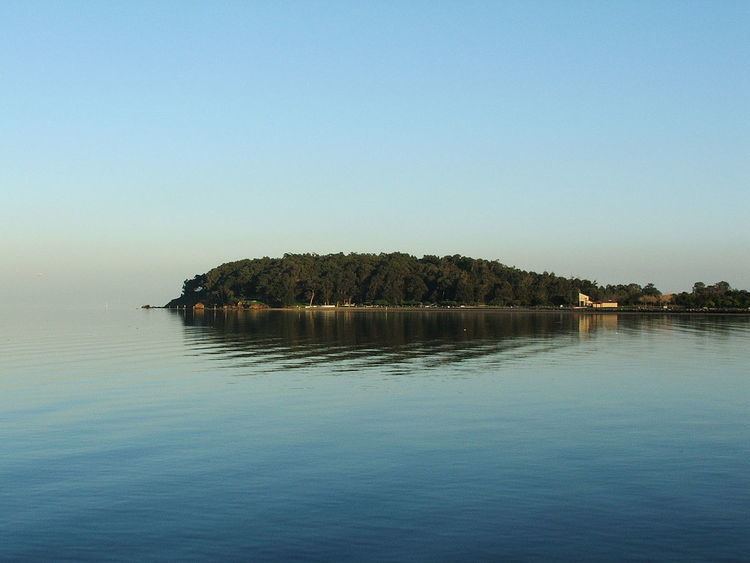Created 1962 Phone +1 650-573-2592 | Area 2.711 km² | |
 | ||
Type Parkland, woodland, museum & zoo Location San Mateo County, California, USA Operated by San Mateo County, California Address 1701 Coyote Point Dr, San Mateo, CA 94401, USA Hours Open today · 8AM–5PMTuesday8AM–5PMWednesday8AM–5PMThursday8AM–5PMFriday8AM–5PMSaturday8AM–5PMSunday8AM–5PMMonday8AM–5PM Similar CuriOdyssey, Laurelwood Park, Oyster Point Marina/Park, San Francisco Bay Trail, Harborview Park | ||
Coyote point park beach san mateo county
Coyote Point Park is a 670-acre (270 ha) park in San Mateo County, California, United States. Located on San Francisco Bay, it is south of San Francisco International Airport on the border of Burlingame and San Mateo.
Contents
- Coyote point park beach san mateo county
- Coyote point park tidal marsh san mateo county california
- Precolumbian
- Spanish settlement
- Pacific City
- Educational use
- Facilities
- CuriOdyssey
- References
The distinctive point, covered by a grove of eucalyptus trees, can be seen from airplanes approaching San Francisco International Airport and is a good location for aircraft spotting and birdwatching.
Coyote point park tidal marsh san mateo county california
Precolumbian
Coyote Point was originally an island in San Francisco Bay with a marsh connecting it to the mainland. Because it has no fresh water, it is doubtful that Native Americans lived here, but shell mounds on the point indicate that it was at least occasionally used, possibly for special ceremonies or feasts.
Spanish settlement
Coyote Point was part of the Presidio and Mission lands until it passed to Mexico. The Governor of Mexico then granted the land to Coyetano Arenas, to which the name can probably be traced. The Arenas family sold it to the firm of Mellus and Howard, and Howard purchased it from the firm in 1850. The land remained in the Howard family until it was sold to the county and the federal government in 1942.
In the late 19th century, the Howard family built a pier at Coyote Point for lumber loading. They also reclaimed the marsh between the island and the mainland (now a golf course) to create dairy pasture. They built a bathhouse and pool on the beach in 1880, and had Eucalyptus, Cypress and Pine trees planted on the knoll.
Pacific City
In 1922, a group of promoters created the "Pacific City Amusement Park" on about 90 acres (36 ha) of land along the beach leased from the Howard family. The park included a boardwalk, children's playground, scenic railway, merry-go-round, Ferris wheel, dancing pavilion and several food concessions. Although it was reputed to have had one million visitors in the first season, a fire during the second season destroyed about one quarter of the development, and it never opened for a third season. The reasons given for the closure were strong afternoon winds and sewage contamination in the bay.
Educational use
In 1942, the federal government purchased 10 acres (4.0 ha) of land on Coyote Point for one of three Merchant Marine Cadet Basic schools, the Pacific Coast Cadet Corps (the other two were for the Atlantic Coast Cadet Corps at Kings Point, New York and the Gulf Coast Cadet Corps at Pass Christian, Mississippi). The merchant marine training program had been shortened from 48 to 18 months, in three stages:
- Basic School (lasting 3 months, serving as Fourth Class Cadet-Midshipmen at Kings Point, San Mateo, or Pass Christian)
- Shipboard experience (6 months, Third Class aboard merchant vessels)
- Academy (9 months, Second and First Class at Kings Point)
The Pacific Coast Merchant Marine Cadet Basic School had started aboard the ex-riverboat Delta Queen on 1 July 1941; enrollment quickly outgrew the ship, and the school moved to land-based facilities on Treasure Island. With the outbreak of war, enrollment exceeded the capacity of facilities on Treasure Island and US$450,000 (equivalent to $6,596,000 in 2016) was appropriated to enlarge the school in May 1942. Plans were swiftly drawn up by Cdr. Ralph M. Sheaf, and construction began on the facilities at Coyote Point on June 25, 1942. The Basic School opened on August 15, 1942 and was officially dedicated on August 21, 1943 with a capacity of 528 cadets.
In 1946, the buildings were purchased by the College of San Mateo, and this became the college campus until the land was acquired by San Mateo County in 1962.
Facilities
The park contains many trails for walking and bicycling, and includes sections of the San Francisco Bay Trail. In addition, there are many small picnic areas throughout the park, eight larger picnic areas available by registration, the Captains House Conference Facility, the Coyote Point Pistol and Rifle Range, CuriOdyssey, the Magic Mountain Playground and the Coyote Point Marina.
CuriOdyssey
CuriOdyssey, formerly the Coyote Point Museum for Environmental Education is a hands-on science museum and native animal zoo located in the park at 1651 Coyote Point Drive in San Mateo, California, United States.
